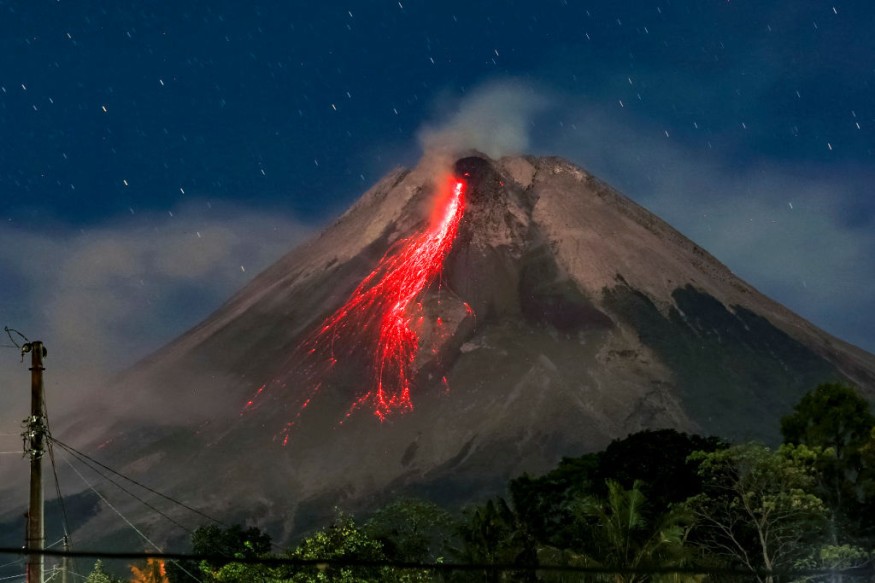Volcanoes are fascinating natural phenomena that can produce spectacular eruptions of lava, ash, and gas. However, not all volcanoes erupt in the same way.
Some are more explosive than others, depending on the type and amount of magma they contain, as well as the presence of other substances that can affect the pressure and viscosity of the magma.
For a long time, geoscientists have thought that water is the main factor that causes explosive eruptions, especially in basaltic volcanoes.
What makes volcanoes erupt differently?

Basaltic volcanoes are those that produce basalt, a dark and dense type of lava that is rich in iron and magnesium.
These volcanoes are typically found on the interior of tectonic plates, such as Hawaii and Iceland.
Geoscientists have assumed that water, either from the ocean or from groundwater, gets mixed with the magma stored in the crust and lowers its melting point. This makes the magma more fluid and prone to rise to the surface.
As the magma ascends, the water vaporizes and expands, creating bubbles that increase the pressure and violence of the eruption.
However, a new study by researchers from Cornell University has challenged this conventional view and proposed a different mechanism for explosive basaltic eruptions.
The study suggested that carbon dioxide, not water, is the main trigger for these eruptions. Carbon dioxide is a gas that is naturally present in magma, but it can also be released from deep sources in the mantle, the layer of hot and molten rock below the crust.
The study proposed that basaltic volcanoes are fed by deep magma that comes directly from the mantle, passing fast through the crust.
This magma contains a lot of carbon dioxide that separates from the liquid as bubbles when it reaches lower pressures near the surface. These bubbles drive the magma upward and cause explosive eruptions.
How did the researchers discover this new mechanism?
The researchers used a combination of field observations, laboratory experiments, and computer simulations to test their hypotheses, as per Phys.org.
They focused on a specific type of basaltic volcano called Fogo, located on the Cape Verde islands off the coast of West Africa.
Fogo is one of the most active and explosive basaltic volcanoes in the world, having erupted 27 times since 1500.
The most recent eruption was in 2014, which produced large amounts of lava and ash that destroyed several villages.
The researchers collected samples of lava and ash from Fogo and analyzed their chemical composition and physical properties. They found that these samples contained very little water, but a lot of carbon dioxide. They also found that these samples had a high temperature and a low viscosity, indicating that they came from a deep source in the mantle.
The researchers then performed experiments in their laboratory to recreate the conditions inside Fogo's magma chamber.
They used a device called a piston-cylinder apparatus to subject synthetic magma to high pressures and temperatures.
They measured how much carbon dioxide was dissolved in the magma at different depths and how much was released as bubbles when the pressure decreased.
Moreover, the researchers developed a numerical model to simulate how carbon dioxide affects the dynamics of magma ascent and eruption.
They used data from Fogo's seismic activity to calibrate their model and to estimate how fast and how often the magma rises to the surface.
Also Read: Philippines' Most Active Volcano on the Verge of Eruption, Alert Level 2 Raised Amid Volcanic Unrest
What are the implications and applications of this new mechanism?
The study provides new insights into how basaltic volcanoes work and how they affect their environment, as per ScienceDaily.
It showed that carbon dioxide plays a more important role than previously thought in driving explosive eruptions.
It also shows that basaltic volcanoes can tap into deep sources of carbon dioxide that may have been stored in the mantle for millions of years.
The study has several implications and applications for various fields of science and society. For example:
- It can help improve volcanic hazard assessment and mitigation by providing more accurate predictions of when and how basaltic volcanoes will erupt.
- It can help understand how volcanoes contribute to global climate change by releasing large amounts of carbon dioxide into the atmosphere.
- It can help explore how life evolved on Earth by revealing how carbon dioxide cycles between different layers of the planet.
- It can help search for life on other planets by identifying potential volcanic sources of carbon dioxide that could support biological activity.
Related article:
© 2025 NatureWorldNews.com All rights reserved. Do not reproduce without permission.





